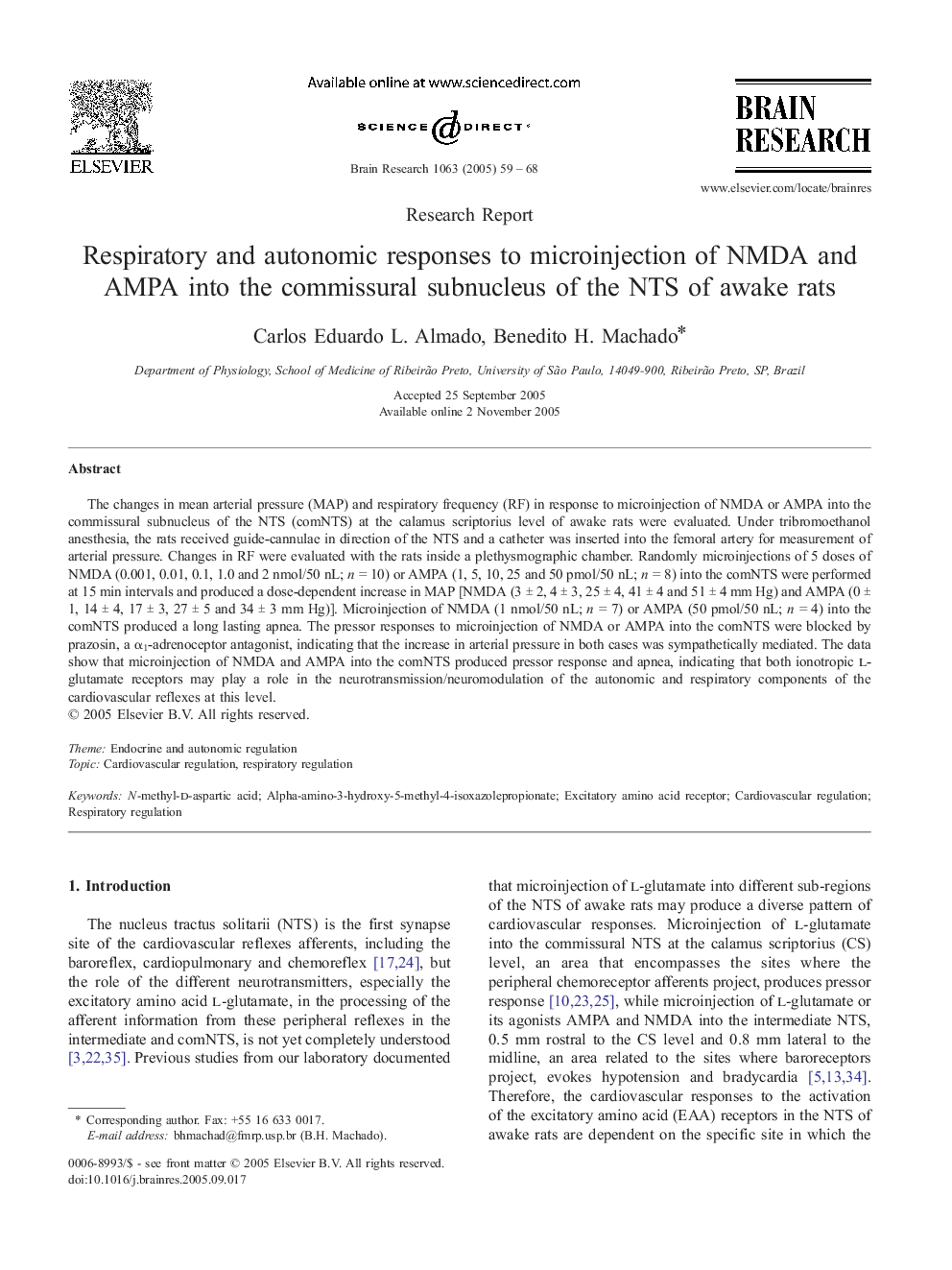| Article ID | Journal | Published Year | Pages | File Type |
|---|---|---|---|---|
| 9415775 | Brain Research | 2005 | 10 Pages |
Abstract
The changes in mean arterial pressure (MAP) and respiratory frequency (RF) in response to microinjection of NMDA or AMPA into the commissural subnucleus of the NTS (comNTS) at the calamus scriptorius level of awake rats were evaluated. Under tribromoethanol anesthesia, the rats received guide-cannulae in direction of the NTS and a catheter was inserted into the femoral artery for measurement of arterial pressure. Changes in RF were evaluated with the rats inside a plethysmographic chamber. Randomly microinjections of 5 doses of NMDA (0.001, 0.01, 0.1, 1.0 and 2 nmol/50 nL; n = 10) or AMPA (1, 5, 10, 25 and 50 pmol/50 nL; n = 8) into the comNTS were performed at 15 min intervals and produced a dose-dependent increase in MAP [NMDA (3 ± 2, 4 ± 3, 25 ± 4, 41 ± 4 and 51 ± 4 mm Hg) and AMPA (0 ± 1, 14 ± 4, 17 ± 3, 27 ± 5 and 34 ± 3 mm Hg)]. Microinjection of NMDA (1 nmol/50 nL; n = 7) or AMPA (50 pmol/50 nL; n = 4) into the comNTS produced a long lasting apnea. The pressor responses to microinjection of NMDA or AMPA into the comNTS were blocked by prazosin, a α1-adrenoceptor antagonist, indicating that the increase in arterial pressure in both cases was sympathetically mediated. The data show that microinjection of NMDA and AMPA into the comNTS produced pressor response and apnea, indicating that both ionotropic l-glutamate receptors may play a role in the neurotransmission/neuromodulation of the autonomic and respiratory components of the cardiovascular reflexes at this level.
Keywords
Related Topics
Life Sciences
Neuroscience
Neuroscience (General)
Authors
Carlos Eduardo L. Almado, Benedito H. Machado,
